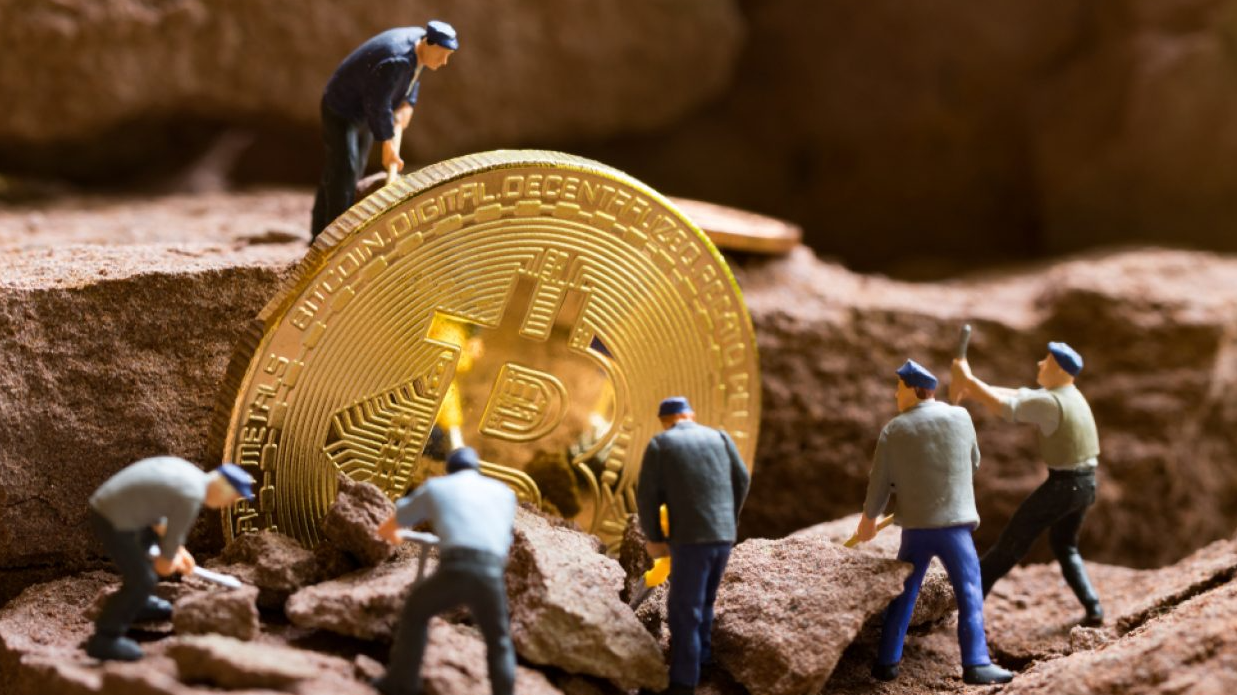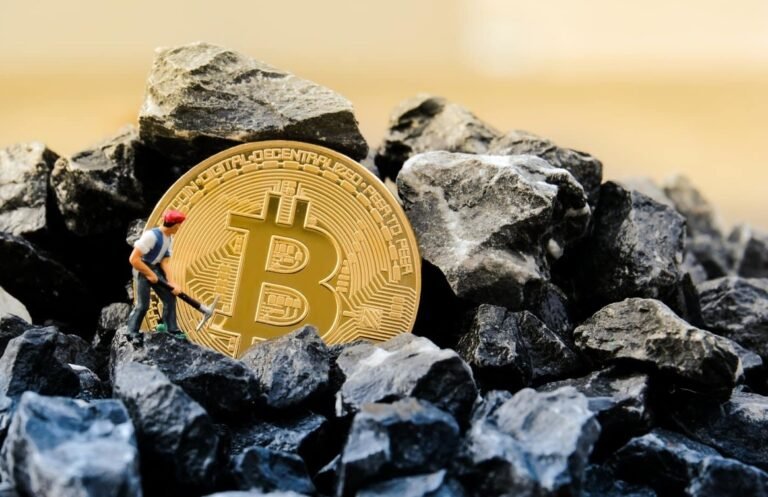Bitcoin mining involves validating and adding transactions to the blockchain, the distributed database of Bitcoin activity. It is, therefore, a crucial component in the operation of the Bitcoin ecosystem since it also brings fresh Bitcoins into circulation. Unlike conventional money created by central banks, Bitcoin depends on Proof of Work (PoW) to guarantee security, openness, and decentralization.
This approach solves complex mathematical problems using specialized hardware. Miners fight to come up with answers; the first one to succeed gets the right to add a fresh block to the blockchain. The successful miner returns user transaction fees and a block reward, which is newly generated bitcoins.
Bitcoin Mining Process
Fundamentally, Bitcoin mining involves searching for a cryptographic hash that meets the requirements of the Bitcoin Improvement. This hash must be below a specific difficulty target, which varies roughly every 2016 blocks—that is, every two weeks—depending on the speed of past block mining.
Miners use potent ASICs (Application-Specific Integrated Circuits) to accomplish trillions of hash operations per second. These devices are more efficient than CPUs and GPUs and are optimized for Bitcoin’s SHA-256 algorithm. Hash puzzles are brute-forced. Miners who respond correctly add a block to the chain. Other nodes verify this network-published occurrence. Verification permanently adds it to Bitcoin’s history.
Mining Incentive Structure
Mining is financial as much as technological. Miners get a set quantity of bitcoins for every block effectively mined. Beginning at 50 BTC in 2009, this block reward halves roughly every four years. The most recent halving in 2020 reduced the price to 6.25 BTC; in 2024, it is likely to drop to 3.125 BTC.
 A side income source is transaction fees. Users pay more to rank their transactions when network congestion rises. Miners pay these fees, encouraging them to keep safeguarding the network even after all 21 million bitcoins are extracted—a mark estimated around 2140.
A side income source is transaction fees. Users pay more to rank their transactions when network congestion rises. Miners pay these fees, encouraging them to keep safeguarding the network even after all 21 million bitcoins are extracted—a mark estimated around 2140.
Modern Mining Industry
Early on, anyone could mine Bitcoin using a standard PC. Modern mining is a competitive sector that requires large hardware, electrical, and cooling systems and location-choice investments.
Top-notch ASIC miners come from leading producers including Bitmain, MicroBT, and Canaan. Large mining farms utilizing these devices are usually found in areas with inexpensive electricity and mild climates, such as Iceland, Kazakhstan, sections of Texas, and Canada. Mining pools also play a vital part. These cooperative mining organizations pool their computational resources to increase the possibility of winning a reward. Participants’ contributions to the total hash rate and how much each gets paid are then determined.
Sustainable Mining Practices
Energy used to mine Bitcoins is a hot topic. According to the Cambridge Centre for Alternative Finance, mining Bitcoin uses more energy yearly than several nations. This has generated concerns regarding its impact on the surroundings.
The story is changing, though. Many mining activities in places like El Salvador are moving toward renewable energy sources, including hydropower, solar, wind, and volcanic geothermal energy. Innovations, including immersion cooling systems and flare gas mining, which uses waste energy from oil drilling, partially reduce mining’s carbon impact. The Bitcoin Mining Council, a volunteer association of miners and businesses that regularly publishes studies on the sustainability of mining operations, promotes environmental responsibility and openness.
Decentralized Network Security
Maintaining the distributed and trustless character of the Bitcoin network depends on mining Bitcoin. No central power checks transactions; thousands of unaffiliated miners cooperate to validate and guard the blockchain.
 This makes Bitcoin relatively resistant to fraud and censorship. The enormous scope of mining activities makes a successful 51% attack, where one entity gets control of most of the network’s computational capacity, theoretically viable but practically unworkable. Since mining is everywhere, it is almost impossible for any government or company to cut off the Bitcoin network, so this digital currency is relatively strong.
This makes Bitcoin relatively resistant to fraud and censorship. The enormous scope of mining activities makes a successful 51% attack, where one entity gets control of most of the network’s computational capacity, theoretically viable but practically unworkable. Since mining is everywhere, it is almost impossible for any government or company to cut off the Bitcoin network, so this digital currency is relatively strong.
Global Mining Regulations
The legal scene for mining Bitcoin differs worldwide. Once the worldwide center of Bitcoin mining, China has outlawed the activity, pushing miners to move. Conversely, nations like El Salvador and Bhutan have embraced mining as a national policy by using renewable energy sources to run mining activities.
Mining is permitted in the United States, but under municipal control. While some states contemplate limitations based on environmental issues, others provide financial advantages for Crypto market companies. As cryptocurrencies increase popularity, long-term mining infrastructure investment depends on global regulatory clarity.
Final thoughts
The mining of Bitcoin has exciting and challenging prospects. Transaction fees will have to maintain the incentive system of the network when block rewards drop. This change might inspire creativity in Layer 2 solutions like the Lightning Network, which can reduce prices and ease traffic.
Mining will change depending on ongoing developments in regulatory adaptability, energy innovation, and hardware efficiency. Although some believe that growing difficulty and expenses will cause centralization, others contend that the decentralization of renewable energy might strengthen smaller, more geographically scattered mining activities. Bitcoin mining is still dynamic, combining technology, economics, and environmental policy into a unique representation of distributed finance.

